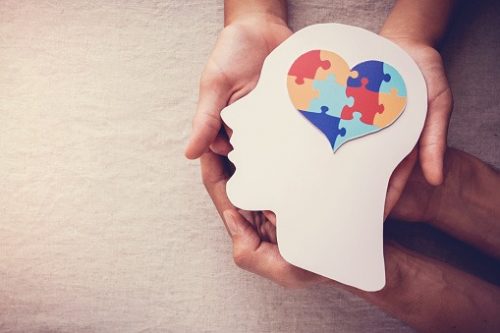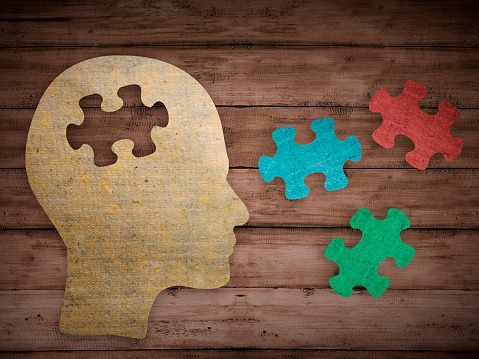I am not that interested in any psychology subjects. I find it too boring and too broad, so I don’t pay much attention to each lesson. I wouldn’t say I like the subject because I never genuinely care about a person’s personality and how psychology understands and describes it. I am not eager to learn about psychology because it is usually all about these doctors and psychologists that I am sure I would not remember once I graduate.
But before I finally convinced myself that psychology for me is a dead-end, things changed when I attended a class for my best friend. I wasn’t supposed to be there. I just entered the psychology class because I had to be present for the subject on behalf of my friend. At first, I wouldn’t say I liked the idea. That is because aside from me not liking psychology class, I would have to pretend to be “her” for the next couple of hours.

Source: pixabay.com
But when the lesson started, I got hooked from the very beginning. The topic was all about classical conditioning, which seems pretty interesting because it focused on understanding human behavior. Stupidly, I thought that humans behave based on their will. But classical conditioning made a point when it showed me how the environment affects humans’ conditioned and unconditioned responses.
What is a good example of classical conditioning?
One of the good examples of classical conditioning is when you hear a notification sound on the phone. Whenever we are around with someone and hear their phone ringing like yours, we reflexively begin to reach our mobile device. The phone notification serves as a stimulus, while what your body does is an unconditional behavioral response. Another example is conditioning a dog using the sound of a bell so it could salivate. From there, you pair the presentation of food repeatedly with the sound of the bell. And as soon as the dog begins to salivate in response to the bell tone, that is where you can conclude that the classical conditioning response has been acquired.
What are the four elements or principles of classical conditioning?
The principles or stages of classical conditioning are acquisition, spontaneous recovery, extinction, stimulus generalization, and discrimination. These are significantly important to produce a behavioral response known as a conditioned response, which applies to the neutral stimulus sufficient to produce a specific behavior.
What are the three stages of classical conditioning?
The three known stages of classical conditioning are before acquisition, acquisition, and after acquisition. At each of these stages, stimuli and responses are identified by diverse terminology, in which associations are made between situations and events that come about together. Two stimuli get linked together to produce a new learned response.
What are the different types of classical conditioning?
The different classical conditioning processes are Unconditioned stimulus, Unconditioned response, Conditioned stimulus, Conditioned response, Extinction, Generalization, and Discrimination.
How does classical conditioning work?
Classical conditioning is t happens unconsciously. It is an automatic conditioned response paired with a specific stimulus that creates a behavior. A good example of it is when someone else’s phone rings; we automatically check on ours even if we already knew there is nothing there. It usually happens when the conditioned stimulus is presented alone.
What are the five elements of classical conditioning?
The basic components of classical conditioning include Neutral Stimulus, such as sound. The unconditioned response or the unlearned naturally occurring responses, such as feeling hungry when smelling the food. Then there is the unconditioned stimulus or something that is presented and makes you react. An example of this is when you sneeze because a feather tickles your nose or flinch away because you heard a loud bang. Conditioned response reflects from the triggering stimuli, and conditioned stimulus is the response to the trigger.
How does conditioning influence behavior?
In physiology, conditioning is a behavioral process whereby it creates a result of reinforcement that is more frequent or unsurprising in a given environment. There is the understanding of a person’s behavior where he focuses on looking at the reason for his actions and the consequences that go along with it.
What is classical conditioning in consumer behavior?
Consumer behavior is the study of a consumer’s way of thinking. From how they use to choose, consume or use, and dispose of products and services. These can include consumers’ mental, behavioral, and emotional responses. Consumer behavior incorporates all aspects that affect their search, selection, and purchase. Consumer behavior ideas often come from several sciences, including chemistry, biology, psychology, and economics.
What is classical conditioning theory?
The Pavlovian or classical conditioning theory, also known as respondent conditioning, is based on the assumption that learning is developed through an individual’s environmental interactions. It is a convincing theory that the environment shapes a person’s behavior and internal mental state. However, feelings, thoughts, emotions are not included as it does not explain human behavior.

Source: pixabay.com
What is another name for conditioning psychology?
Another name for conditioning psychology is operant conditioning and instrumental conditioning.
Does conditioning affect emotion?
Yes. The conditioned emotional response usually comes from the association of a quite neutral stimulus with a few levels of painful or fear-inducing experience. Since emotions are innate, biologically, the conditioned emotional response includes the expression of learned emotions that usually depends on the social environment that drives reactions to certain challenges and opportunities. Typically the fear or anxiety, or any negative emotional response, becomes associated with a neutral stimulus resulting from classical conditioning.
What are the two types of conditioning?
The two types of processes that lead to learning conditioning are both classical conditioning and operant conditioning. Classical conditioning pairs two stimuli that often work with involuntary responses. Meanwhile, operant conditioning pairs behavior and response that works with voluntary behaviors.
What is conditioning in animal behavior?
Conditioning in animal behavior is a type of learning in which an animal gain knowledge, behaves, and operates in the environment. An animal can get conditioned to respond to the new response with a familiar stimulus, particularly the ones needed for survival. The types of learning in animal behavior include sensitization, habituation, and classical conditioning.
How does classical conditioning affect learning?
Both operant conditioning and classical conditioning are processes that lead to learning. Classical conditioning pairs a given stimulus (or signal) that becomes increasingly effective in evoking a response. There is a response that occurs with increasing regularity in a well-specified and stable environment.
What is an example of a conditioned response?
The best example of a conditioned response is the smell of the food. It is an unconditioned stimulus that promotes a feeling of hunger, which responds to the smell of untested food. It becomes a conditioned response when hunger gets partnered with and the sound of a whistle. Thus, the conditioned response revolves around the sound of the while that allows you to become hungry even without the food’s presence.

Source: pixabay.com
Final Thoughts
After knowing a lot about classical conditioning, my take on psychology changed. I now love to learn more about how people’s personalities, thoughts, behavior, and feelings are affected by stimuli. With the understanding of the subject, perhaps I would enroll in a psychology class next semester.
